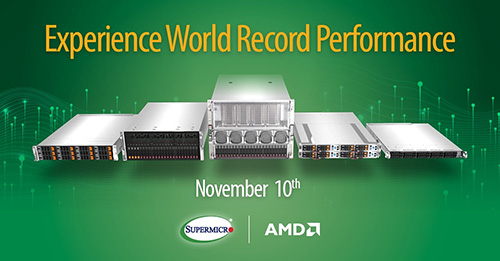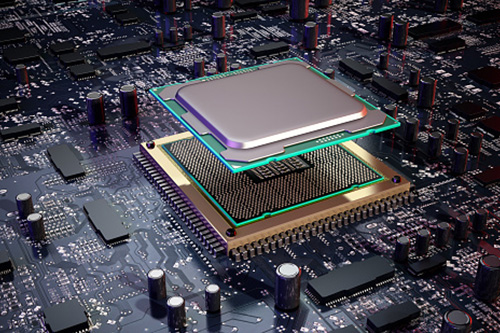Supermicro A+ Workstations Articles
Manage Your HPC Resources with Supermicro's SuperCloud Composer
- November 18, 2022
- Author: David Strom
Today’s data center has numerous challenges: provisioning hardware and cloud workloads, balancing the needs of performance-intensive applications across compute, storage and network resources, and having a consistent monitoring and analytics framework to feed intelligent systems management.
Supermicro Debuts New H13 Server Solutions Using AMD’s 4th-Gen EPYC™ CPUs
- November 16, 2022
- Author: David Strom
Last week, Supermicro announced its new H13 A+ server solutions, featuring the latest fourth-generation AMD EPYC™ processors.
Unlocking the Value of the Cloud for Mid-size Enterprises
Organizations around the world are requiring new options for their next-generation computing environments. Mid-size organizations, in particular, are facing increasing pressure to deliver cost-effective, high-performance solutions within their hyperconverged infrastructures (HCI).
Register to Watch Supermicro's Sweeping A+ Launch Event on Nov. 10
Join Supermicro online Nov. 10th to watch the unveiling of the company’s new A+ systems -- featuring next-generation AMD EPYC™ processors. They can't tell us any more right now. But you can register for a link to the event by scrolling down and signing-up on this page.
The Perfect Combination: The Weka Next-Gen File System, Supermicro A+ Servers and AMD EPYC™ CPUs
- October 20, 2022
- Author: David Strom
Weka’s file system, WekaFS, unifies your entire data lake into a shared global namespace where you can more easily access and manage trillions of files stored in multiple locations from one directory.
Mercedes-AMG F1 Racing Team Gains an Edge with AMD’s EPYC™ Processors
- October 18, 2022
- Author: David Strom
In F1, fast cars and fast computers go hand in hand. Computational performance became more important when F1 IT authorities added rules that dictate how much computing and wind tunnel time each team can use. Mercedes was the top finisher in 2021 giving it the biggest compute/wind tunnel handicap. So, when it selected a new computer system, it opted for AMD EPYC™ processors, gaining 20% performance improvement to get more modeling done in less time.
Eliovp Increases Blockchain-Based App Performance with Supermicro Servers
- October 13, 2022
- Author: David Strom
Eliovp, which brings together computing and storage solutions for blockchain workloads, rewrote its code to take full advantage of AMD’s Instinct™ MI100 and MI250 GPUs. As a result, Eliovp’s blockchain calculations run up to 35% faster than what it saw on previous generations of its servers.
Microsoft Azure’s More Capable Compute Instances Take Advantage of the Latest AMD EPYC™ Processors
- October 11, 2022
- Author: David Strom
Azure HBv3 series virtual machines (VMs) are optimized for HPC applications, such as fluid dynamics, explicit and implicit finite element analysis, weather modeling, seismic processing, and various simulation tasks. HBv3 VMs feature up to 120 Third-Generation AMD EPYC™ 7v73X-series CPU cores with more than 450 GB of RAM.
Supermicro and Qumulo Deliver High-Performance File Data Management Solution
- October 3, 2022
- Author: David Strom
Fast Supermicro A+ Servers with Dual AMD EPYC™ CPUs Support Scientific Research in Hungary
- September 22, 2022
- Author: David Strom
The Budapest Institute for Computer Science and Control (known as SZTAKI)
- ‹ previous
- 2 of 3
- next ›












